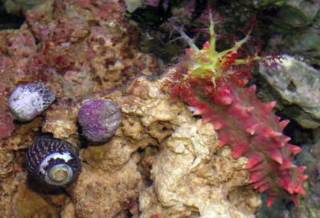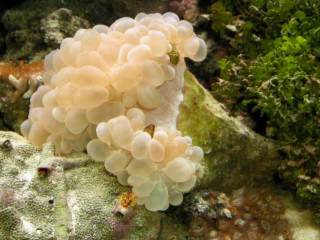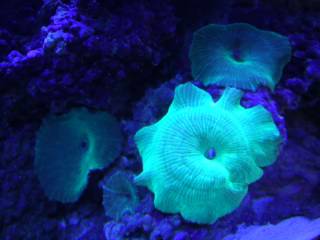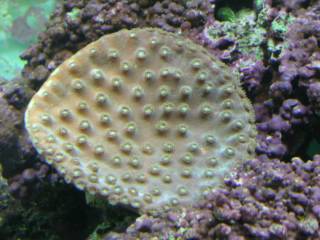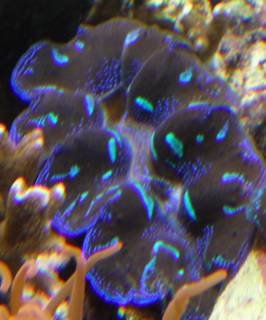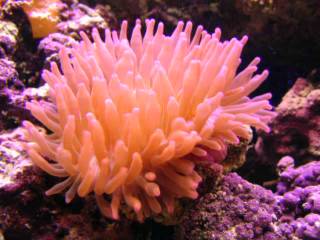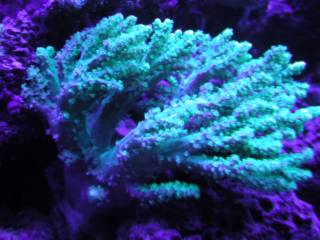
Sunday, December 19, 2004
Green Nephthea
Green Nephthea. This colony came from Rich, President of MARS, and has been fragged many times. The nephthea needs moderate to strong flow and small particulate foods (TLF Marine Snow, DT's Phytoplankton) should be blown across their extended polyps. They do have the tendancy to "brown" up under intense lighting, therefore this coral will soon have a new home in the North Lake Tahoe Boys and Girls Club's aquarium.


Purple Bullseye Mushroom
Wednesday, October 27, 2004
Tuesday, October 19, 2004
Author and coral farmer Anthony Calfo gave an animated and informative frag demonstration to the members of M.A.R.S. and B.A.R. (Bay Area Reefers) last Saturday in Dixon. He fragged a leather, favia, birdsnest, acropora and a rose anemone. The demonstration was professionally video taped and hopefully I can provide my clients with a copy to view in the near future.
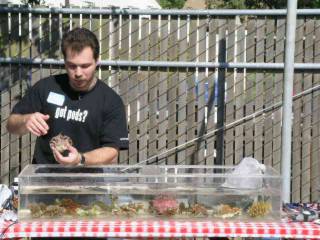

Monday, October 11, 2004
Thursday, September 16, 2004
Montipora Aquituberculata. I received this frag from Tim Plaza, Marine Aquarists Roundtable of Sacramento, (MARS). The very unique part of this coral, besides its intense coloration, is that this plating Montipora can also grow vertical branches that coral biologists refer to as nodules. This coral was first aquired in the hobby trade in the mid 1990's and currently there is over a year and a half wait list to aquire a tiny grade size that sells in the $75 range. I hope to have it ready for my clients in late 2005.
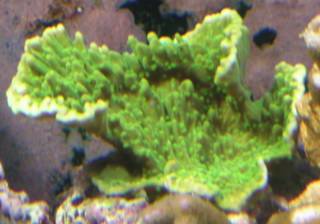

Tuesday, September 14, 2004
Sunday, September 12, 2004
Tuesday, August 31, 2004
Welcome. I learned about blogs today in the Sacramento Bee and thought this would be a great way to share photos and correspond with clients, family and friends. This photo of us was taken last February at Las Rocas, south of Rosarito, Baja California. If you're ever down there, check out Las Rocas' fantastic tide pools full of urchin and anemones. And the margaritas are pretty good too!
.1.jpg)
.1.jpg)
Subscribe to:
Posts (Atom)



